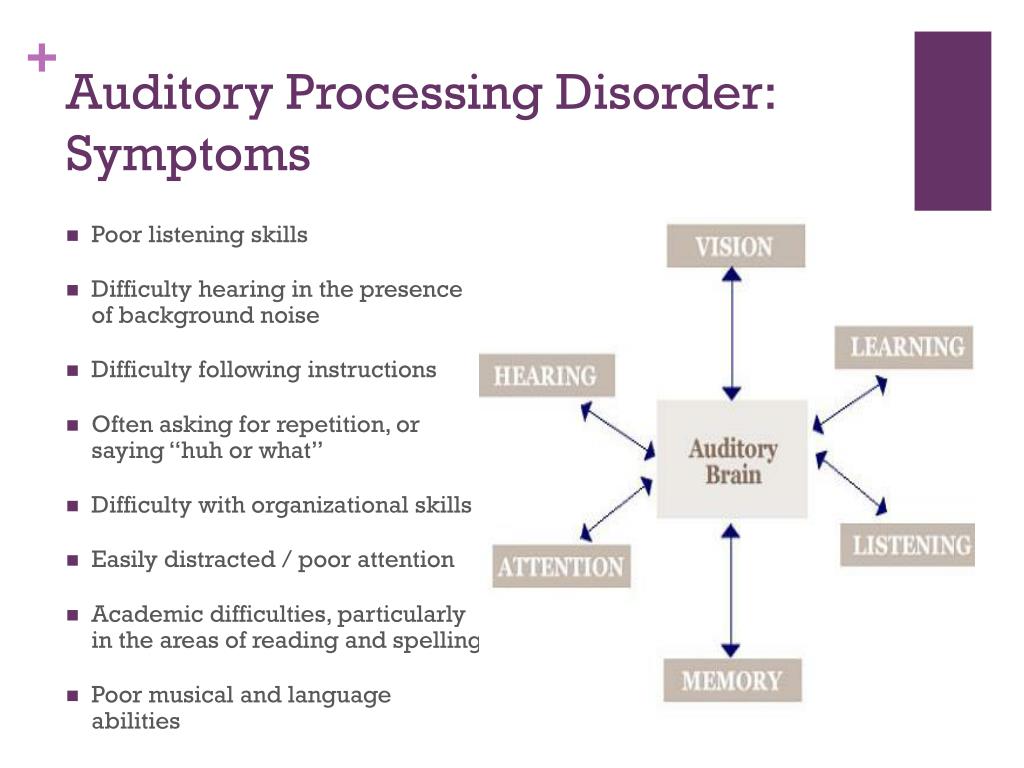


Putting different letter sounds together to form words,.is it from the left or right side of your body), Identifying where sounds are coming from (e.g.telling the difference between peas and bees). The first treatment option focuses on training specific listening skills. A dual approach should be used to better therapy outcomes. There are two treatment approaches for Central Auditory Processing Disorder.

How is Central Auditory Processing Disorder treated? Perhaps Sam has heard her teacher, but finds it difficult to process or understand what was said?Īs a therapist, situations such as this set off alarm bells that signal there may be central auditory processing issues. Is Sam acting defiant? Why isn’t she following instructions? Her hearing has been tested, and there is nothing wrong with it. She cannot understand why the rest of her classmates are leaving their desks and heading outside. The Auditory Processing Disorder Special Interest Group of the British Society of Audiology states: APD is characterised by poor perception of sounds. Sam takes out her maths book and looks around, confused. Today we will talk about fractions, which are on page 5 of your book.” This problem is commonly experienced when complex language is used, long instructions are given, speech is too rapid, and when there is a lot of noise.Įxample: “Everyone, please get your homework from your bags outside, put it on my desk, then come to the front with your blue maths book. The disorder may also be referred to as auditory comprehension deficit, word deafness and auditory perceptual processing dysfunction. In other words, there is a problem with the way the ear talks to the brain, and the brain has trouble interpreting what the ear is trying to tell it. What is Central Auditory Processing Disorder?Ĭentral Auditory Processing Disorder (CAPD) is the inability to understand verbal language in a meaningful way, in the absence of a hearing loss.


 0 kommentar(er)
0 kommentar(er)
